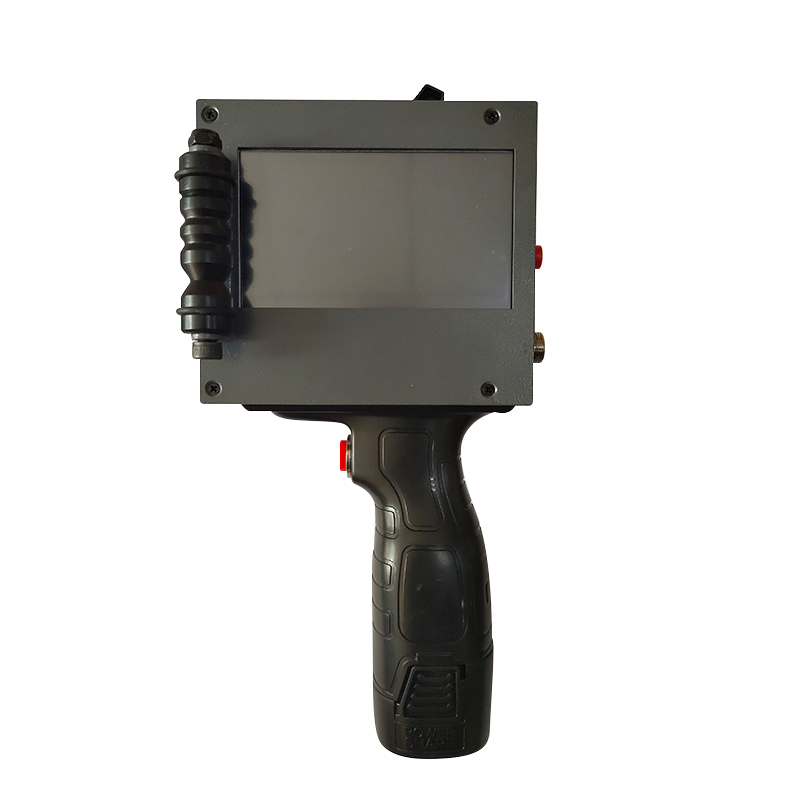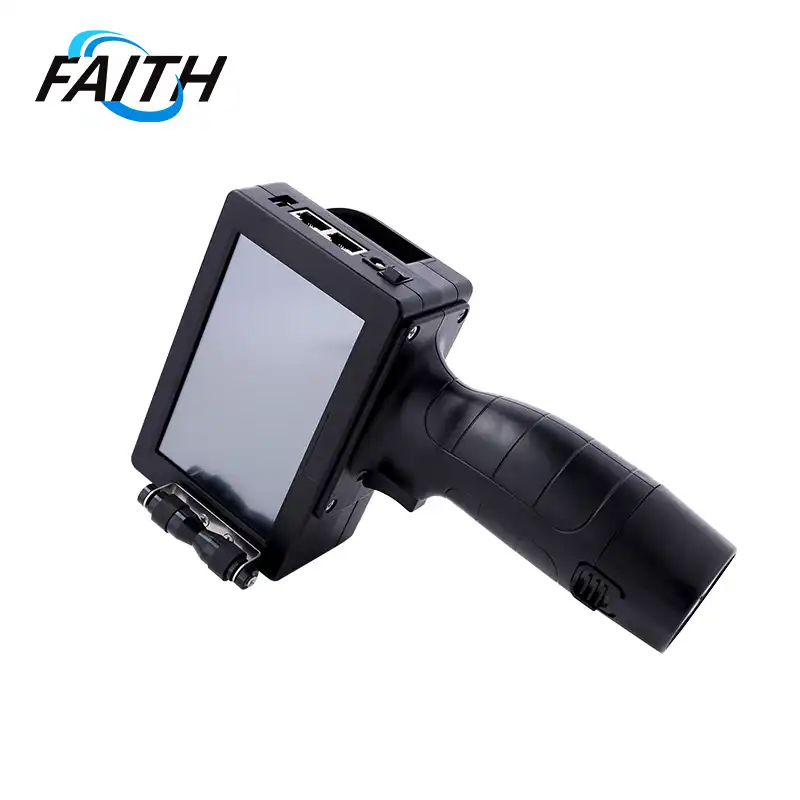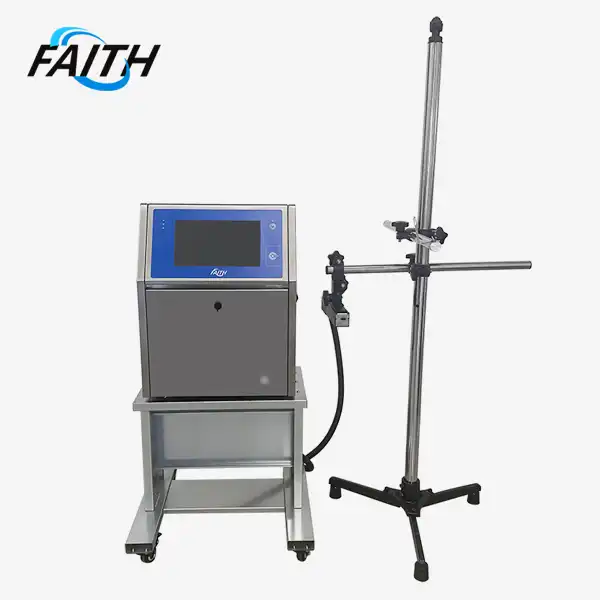5 Key Features of Industrial Continuous Inkjet Printers Explained
Industrial continuous inkjet (CIJ) printers have revolutionized product marking and coding across various industries. These sophisticated machines offer unparalleled speed, versatility, and reliability in printing codes, text, and images on diverse materials. This article delves into the five key features that make industrial continuous inkjet printers indispensable in modern manufacturing: high-speed printing, non-contact printing, excellent substrate compatibility, durable print quality, and efficient ink management. By understanding these features, businesses can make informed decisions about implementing CIJ technology in their production lines, ultimately enhancing efficiency and product traceability.
The Core Technology Behind Industrial Continuous Inkjet Printers
Industrial continuous inkjet printers operate on a fascinating principle that involves controlling the movement of charged particles within an electric field. This technology enables these printers to achieve remarkable printing speeds and precision. Let's explore the intricate process that makes CIJ printing possible:
The Ink Flow Process
At the heart of a CIJ printer is a sophisticated ink flow system. A built-in pump creates a stable ink flow, which is then directed through a control solenoid valve into a crystal oscillator, also known as the spray chamber. This chamber plays a crucial role in the formation of ink droplets.
Droplet Formation
Inside the crystal oscillator, electronic pulses generate rapid vibrations. These vibrations break the continuous ink flow into individual droplets. The frequency of these vibrations determines the number of droplets produced per second. For instance, if the crystal oscillator vibrates 70,000 times per second, it will form an equal number of ink droplets in that time frame.
Precision Control
Once the droplets are formed, they pass through an electric field. This field charges some droplets while leaving others uncharged. The charged droplets are then deflected by another electric field, allowing for precise positioning on the substrate. Uncharged droplets are collected and recirculated back into the ink system, ensuring efficient ink usage.
High-Speed Application
This entire process occurs at incredibly high speeds, allowing industrial CIJ printers to keep pace with rapid production lines. The ability to form and control thousands of droplets per second translates to printing speeds that can exceed hundreds of feet per minute.
Exploring the Five Key Features of Industrial Continuous Inkjet Printers
Now that we understand the underlying technology, let's delve into the five key features that make industrial continuous inkjet printers stand out in the world of product marking and coding:
High-Speed Printing
One of the most notable features of industrial continuous inkjet printers is their ability to print at exceptionally high speeds. These printers can mark products at rates exceeding hundreds of feet per minute, making them ideal for fast-moving production lines. This high-speed capability is crucial for maintaining production efficiency and meeting demanding throughput requirements in modern manufacturing environments.
The speed of CIJ printers is particularly beneficial in industries where product marking needs to keep pace with rapid production, such as beverage bottling, pharmaceutical packaging, or wire and cable manufacturing. By ensuring that coding and marking do not become a bottleneck in the production process, these printers help maintain overall operational efficiency.
Non-Contact Printing
Industrial continuous inkjet printers employ a non-contact printing method, where the ink is ejected from the print head without touching the surface being printed on. This feature offers several advantages:
- Protection of Delicate Products: The non-contact method is particularly useful for printing on fragile or sensitive items that could be damaged by direct contact with a printing mechanism.
- Versatility in Substrate Shape: It allows for printing on uneven or irregularly shaped surfaces, as the print head doesn't need to maintain consistent contact with the substrate.
- Reduced Wear and Tear: Since there's no physical contact between the printer and the product, there's less wear on the printing equipment, potentially extending its lifespan.
- Hygienic Printing: In industries like food and pharmaceuticals, non-contact printing helps maintain hygiene standards by minimizing the risk of contamination during the marking process.
Excellent Substrate Compatibility
A standout feature of industrial continuous inkjet printers is their remarkable ability to print on a wide range of materials. This versatility makes them invaluable across diverse industries where products are made from various substrates. Some of the materials that CIJ printers can effectively mark include:
- Plastics: From PET bottles to plastic packaging films
- Metals: Including aluminum cans, steel pipes, and metallic components
- Glass: Bottles, jars, and other glass containers
- Cardboard: Packaging boxes and cartons
- Paper: Labels and paper-based packaging
- Rubber: Tires and rubber products
- Wood: Wooden products and packaging
- Ceramics: Tiles and ceramic products
This wide-ranging compatibility is achieved through the use of specialized inks formulated for different surface types. Manufacturers can select the appropriate ink type based on the substrate, ensuring optimal adhesion and durability of the printed information.
Durable Print Quality
Industrial continuous inkjet printers are renowned for their ability to produce high-resolution, durable prints. This feature is critical in ensuring that product codes, expiration dates, batch numbers, and other vital information remain legible throughout the product's lifecycle. The durability of CIJ prints is attributed to several factors:
- High-Resolution Output: CIJ printers can produce sharp, clear text and images, even at small font sizes. This high resolution ensures that complex codes and barcodes are easily readable by both human eyes and scanning equipment.
- Ink Formulation: CIJ printers use specialized inks that are resistant to various environmental factors. These inks can withstand exposure to water, oils, solvents, and UV light, ensuring that the printed information remains intact under challenging conditions.
- Fast-Drying Properties: The inks used in CIJ printing dry rapidly upon contact with the substrate, reducing the risk of smudging or smearing during subsequent handling or packaging processes.
- Adherence to Various Surfaces: The inks are formulated to bond effectively with different substrate materials, ensuring that the print remains firmly attached even on smooth or non-porous surfaces.
This combination of high resolution and durability makes industrial continuous inkjet printers ideal for applications where traceability and product identification are crucial, such as in the food and beverage industry, pharmaceutical manufacturing, and automotive parts production.
Efficient Ink Management
The fifth key feature of faith printers is their efficient ink management system. This aspect is crucial for maintaining cost-effectiveness and reducing environmental impact in high-volume printing operations. The ink management features of CIJ printers typically include:
- Ink Recirculation: Many CIJ systems incorporate an ink recirculation mechanism. Unused ink droplets are collected and reintroduced into the ink supply, significantly reducing waste and optimizing ink usage.
- Sealed Cartridge Systems: Advanced CIJ printers often use sealed ink cartridges. These cartridges minimize ink exposure to air, reducing evaporation and contamination, thereby extending ink shelf life and maintaining print quality.
- Automated Viscosity Control: Some systems feature automatic viscosity monitoring and adjustment. This ensures consistent ink properties, which is crucial for maintaining print quality and reducing ink consumption.
- Low-Maintenance Design: Many modern CIJ printers are designed for easy maintenance and cleaning, reducing downtime and the need for frequent servicing.
- Efficient Solvent Management: CIJ printers often include systems for efficient solvent recovery and reuse, further reducing operational costs and environmental impact.
These ink management features not only lead to cost savings for manufacturers but also contribute to more sustainable printing practices by minimizing waste and reducing the frequency of ink replacements.
Applications and Industries Benefiting from Industrial Continuous Inkjet Printers
The versatility and efficiency of industrial continuous inkjet printers make them invaluable across a wide range of industries. Let's explore some of the key applications and sectors where these printers have made a significant impact:
Food and Beverage Industry
In the food and beverage sector, CIJ printers play a crucial role in ensuring product traceability and compliance with regulatory requirements. They are used for printing:
- Expiration dates and best-before information
- Batch codes and lot numbers
- Ingredient lists on packaging
- Barcodes for inventory management
The high-speed capabilities of these printers are particularly beneficial in bottling plants and canning facilities, where production lines move at rapid rates.
Pharmaceutical and Healthcare
The pharmaceutical industry relies heavily on CIJ printers for maintaining strict quality control and meeting regulatory standards. Applications include:
- Printing unique identification codes on medicine packaging
- Marking expiration dates and batch numbers on vials and bottles
- Applying anti-counterfeiting measures through specialized coding
- Labeling medical devices with regulatory information
The durability of CIJ prints ensures that critical information remains legible throughout the product's shelf life, which is paramount in healthcare settings.
Automotive and Industrial Manufacturing
In the automotive and industrial sectors, CIJ printers are used for a variety of marking applications:
- Part numbering and serialization
- Marking production dates on components
- Applying traceability codes on electrical parts
- Printing quality control information on manufactured goods
The ability of CIJ printers to mark on various materials, including metals and plastics, makes them invaluable in these industries.
Electronics and Semiconductor Industry
The electronics industry benefits from the precision and non-contact nature of CIJ printing. Applications include:
- Marking circuit boards with component information
- Applying serial numbers to electronic devices
- Printing batch codes on semiconductor packaging
- Labeling cables and wires with specifications
The high-resolution output of CIJ printers is particularly useful for printing small, detailed codes on electronic components.
Building and Construction Materials
In the construction industry, CIJ printers are used for marking various materials:
- Printing product codes on pipes and fittings
- Marking dimensions and specifications on lumber
- Applying batch numbers to tiles and ceramics
- Labeling insulation materials with R-values and safety information
The durability of CIJ prints is particularly valuable in this sector, where products may be exposed to harsh environmental conditions.
Conclusion
Industrial continuous inkjet printers have become an indispensable tool in modern manufacturing, offering a unique combination of speed, versatility, and reliability. Their key features - high-speed printing, non-contact application, excellent substrate compatibility, durable print quality, and efficient ink management - make them suitable for a wide range of industries and applications. As businesses continue to prioritize efficiency, traceability, and product identification, the role of CIJ printers in industrial settings is likely to grow even further.
For more information about China continuous inkjet printers customized and traceability system solutions, please contact Shenyang Faith Technology Co., Ltd. at sale01@sy-faith.com. Our team of experts is ready to help you find the perfect CIJ printing solution for your specific needs, ensuring that your production line benefits from the latest in marking and coding technology.
FAQ
What is the typical lifespan of an industrial continuous inkjet printer?
The lifespan of an industrial CIJ printer can vary depending on usage and maintenance, but typically ranges from 5 to 10 years with proper care.
Can CIJ printers use different colors of ink?
Yes, while black is most common, CIJ printers can use various ink colors, including red, blue, yellow, and even UV-visible inks for special applications.
How do CIJ printers compare to other industrial printing technologies?
CIJ printers excel in high-speed, non-contact printing on various surfaces. They offer more versatility than laser markers and are faster than thermal inkjet printers for continuous production lines.
References
1. Johnson, M. (2022). "Advancements in Industrial Continuous Inkjet Printing Technology." Journal of Manufacturing Engineering, 45(3), 112-128.
2. Smith, A. & Brown, B. (2021). "Comparative Analysis of Industrial Marking Technologies." International Journal of Production Research, 59(8), 2345-2360.
3. Lee, S. et al. (2023). "Ink Management Systems in Modern CIJ Printers: Efficiency and Environmental Impact." Sustainability in Manufacturing, 12(4), 567-582.
4. Garcia, R. (2020). "Applications of Continuous Inkjet Printing in the Food and Beverage Industry." Food Packaging and Shelf Life, 25, 100523.
5. Wilson, T. (2022). "The Role of Industrial Continuous Inkjet Printers in Pharmaceutical Traceability." Drug Safety Journal, 31(2), 89-104.
Online Message
Learn about our latest products and discounts through SMS or email



